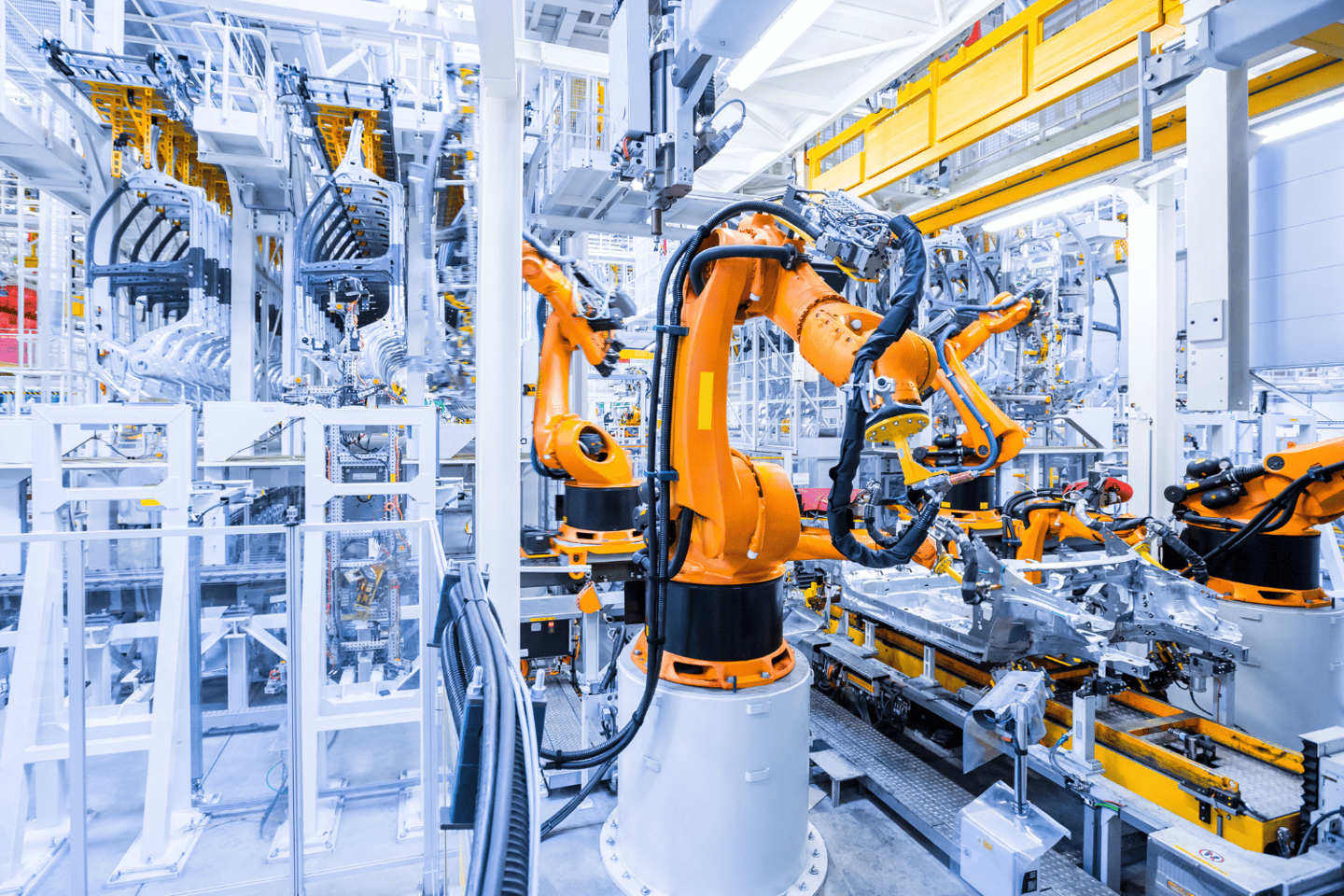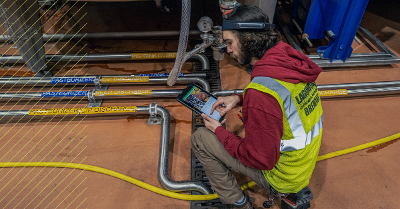In the simplest terms, smart manufacturing describes using new technology to improve our processes and procedures on and off the factory floor. It’s a broad description of an industry change that leverages computerization, the infinite adaptability of AI, IT and data analytics, and powerful adaptive training techniques in order to simultaneously increase productivity, reduce errors, and empower the ever-essential human workforce.
Experts typically describe the fundamental components of smart manufacturing as follows:
- Data.
- Robotics.
- 3D Printing and Additive Manufacturing.
- More effective frontline support and training.

Smart manufacturing elevates the human workforce with incredible technological advances.
Why smart manufacturing?
Resilience.
Modern smart manufacturing plays a pivotal role in enhancing resilience in today's manufacturing and production industries. By harnessing the power of automation, artificial intelligence, and data analytics, companies all around the world are achieving greater agility, adaptability, and responsiveness.
This newfound resilience also plays a pivotal role in helping manage disruptions, and ensuring that operations run smoothly even in unexpected circumstances - like supply chain disruptions, market fluctuations, or a global catastrophe like the recent COVID-19 pandemic.
Optimization.
One of the most powerful advantages of smart manufacturing is the ability to optimize production and supply chain processes through real-time monitoring and predictive analytics. By collecting and analyzing vast amounts of data from interconnected systems, manufacturers gain valuable insights into their operations, enabling them to identify bottlenecks, optimize efficiency, and make data-driven decisions to minimize downtime and improve overall productivity and product quality.
This proactive approach not only boosts operational resilience but also enables manufacturers to quickly adapt their production strategies, shift priorities, and meet changing customer demands with minimal disruption. Ultimately, modern smart manufacturing empowers companies to stay competitive and thrive in today's dynamic manufacturing industry.
The future factory.
Optimized smart manufacturing is a package deal. It’s not just about data, about robotics, about 3D printing - it’s about combining these elements to work seamlessly together and elevate our operations into something new and incredibly powerful.
As the technical and physical elements of the manufacturing advance - leadership, training, and people management will also need to leverage the power of technology to keep pace. It’s equally essential to invest in data-driven management, reskilling, digital leadership, and a tech-augmented workforce in order to harvest the full benefits of smart manufacturing.



 A SwipeGuide user on the shop floor with a tablet and a set of Smart glasses.
A SwipeGuide user on the shop floor with a tablet and a set of Smart glasses.


-1.png?width=600&height=600&name=Kaizen%20Standards%20(1)-1.png)
-2-1.png?width=573&name=Untitled%20design%20(3)-2-1.png)

